Mediterranean Stuffed Shells Loaded With Feta Cheese and Artichokes – Conchiglioni
These stuffed shells harmonize an array of flavors that echo the vibrant essence of the Mediterranean region. Nestled amidst the creamy and delectable filling are chopped spinach, olives, and artichoke. With the added punch of sharp feta flavors, this delightful combination is snugly encased within the shell, making it an ideal choice for both everyday dinner and elegant party.

Turn these Mediterranean cheese-stuffed shells into the centerpiece of a delightful dinner spread. Start with a crisp and colorful Radicchio and Roquette Salad dressed simply with olive oil and lemon, and a side of golden Gnocco Fritto for scooping up dips like this Tarragon Almond Pesto. Add an impressive small bite like the Mini Meatballs in Lemon Leaves to round out the savory offerings. Then finish the evening on a sweet note with the elegant and creamy Strawberry Zuccotto Fiorentino.
Table of Contents
Chronicles of Conchigli
The resounding echo of the conch was so powerful that it sent even giants fleeing, who took it for the roar of a wild beast. That’s Triton, a fish-tailed merman and the messenger god of the sea, blowing his sea-shell trumpet to herald the arrival for his father Poseidon.
In the region of the Mediterranean Sea, an area with many stories and legends, it’s hardly coincidental that the sea has been a wellspring of artistic inspiration, evoking maritime themes that capture the imagination. Along the coastal regions, tales are woven, and images conjured, all inspired by the bounties of the sea.
Found predominantly along the southern coast of Italy, particularly in the regions of Castiglione and Campania, a unique pasta shape has emerged – one that mimics the form of seashells. Among the countless pasta variations, this seashell-shaped pasta holds a special place.
Crafted with the assistance of a specific die in pasta-making machines, this iconic shape showcases the artistry of pasta bronze die cutters. Its smooth, concave interior elegantly cradles fillings, while its ridges expertly embrace sauces and cheese.
Typically, this pasta comes in three sizes:
Conchigliette – the tiniest variety, often used in soups
Conchiglie – of medium size, ideal for pairing with thick and rich sauces
Conchiglioni – the largest, best for stuffing and baking
These jumbo shells, also referred to as “conchiglioni,” have a unique purpose: to serve as a vessel for sumptuous fillings. The flavors and textures within each shell exemplifies the artistry of pasta-making, and in every bite, the stories of the Mediterranean are savored anew.
Grocery and Pantry List for Stuffed Shells
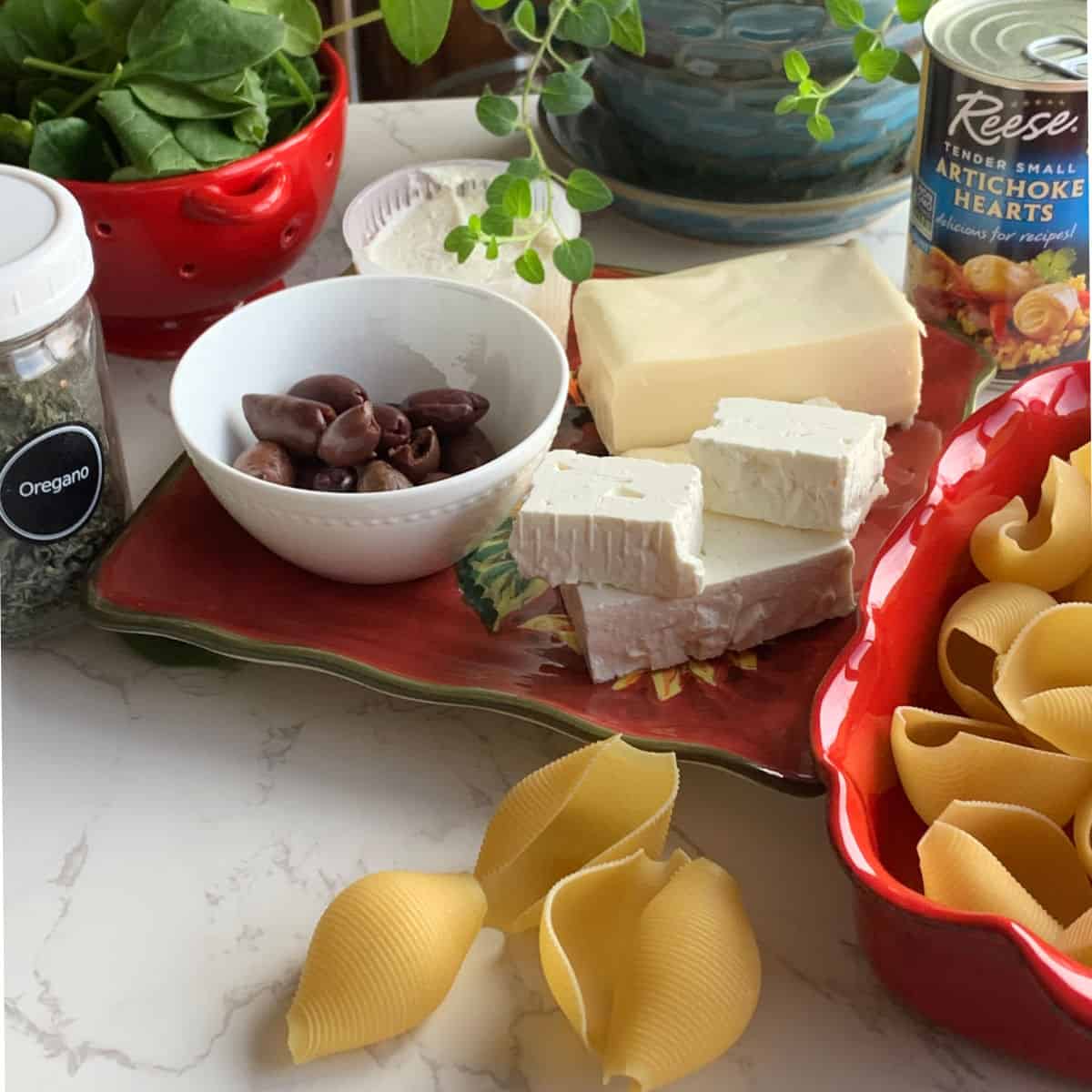
Special Tools to Use:
- Baking dish
- Mixing bowls
Time Required:
Boiling Pasta 8-10 minutes
Making filling 10 minutes
Stuffing the Shells 5-10 minutes
Baking 20-30 minutes
Recipe Steps at a Glance
This stuffed shell recipe can be broken down into the following steps:
Step-by-step: How to Make Stuffed Shells
Step 1: Boiling the Pasta
In a large pot, bring water to a boil and add a teaspoon of salt. Add the pasta and gently stir to shuffle the shells in the water. Since the pasta is concave, some shells may get intertwined. Use a spoon or a rounded edge butter knife to separate them easily.
Cook the pasta for 8-10 minutes, stirring occasionally for even cooking. After 10 minutes, perform a readiness test. Take one shell out of the water and cut it with a knife. You don’t want the pasta to be hard and chalky.
Once the pasta reaches the desired firmness (al dente), drain it in a colander and let it cool down in a single layer on a flat sheet. Its best to undercook the pasta since it will bake again later in the process.
Step 2: Making the Filling
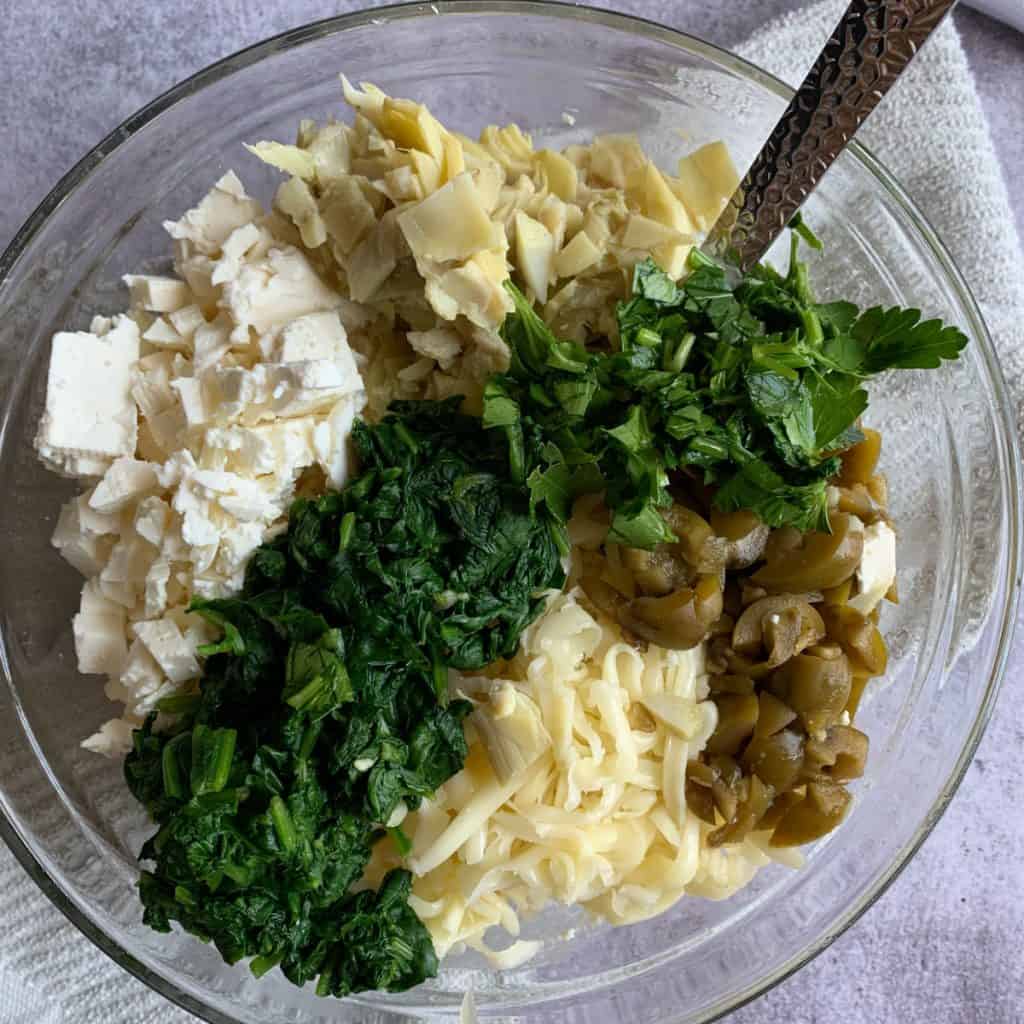
Briefly cook the spinach in boiling water for 30 seconds, then remove with a slotted spoon or drain in a colander. Let it cool down, then squeeze in a towel to remove excess moisture before chopping into small pieces.
In a bowl, combine ricotta, shredded mozzarella, and finely diced feta. Add the cooked and chopped spinach, chopped artichoke hearts, and olives.
Season the mixture with salt, pepper, oregano or thyme, and finely chopped parsley. Mix everything together to combine.
Step 3: Stuffing the Shells
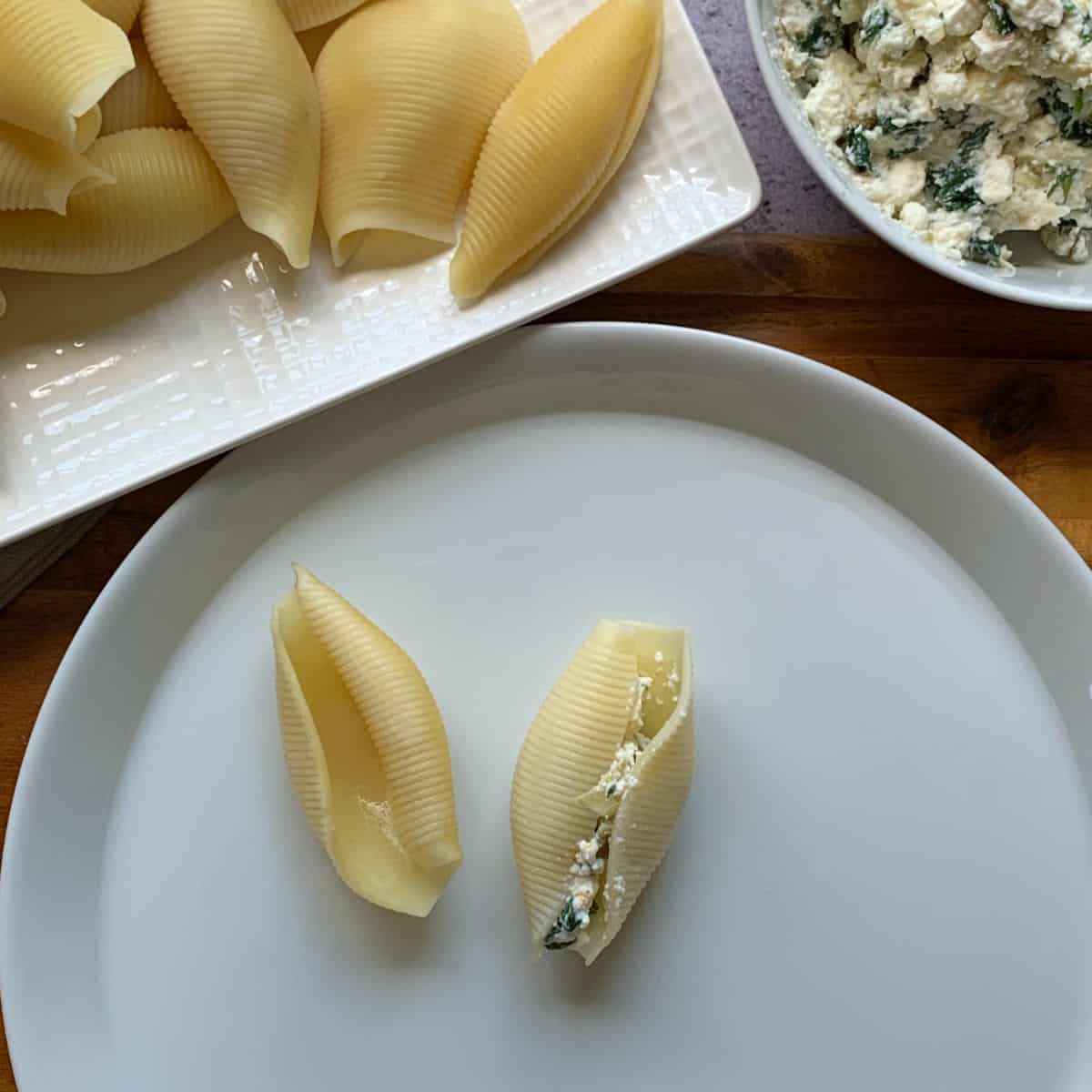


Take a cooked pasta shell and stuff with a tablespoonful of the cheese filling. 25-30g of filling per pasta shell. Bring the side of the shells together and close them
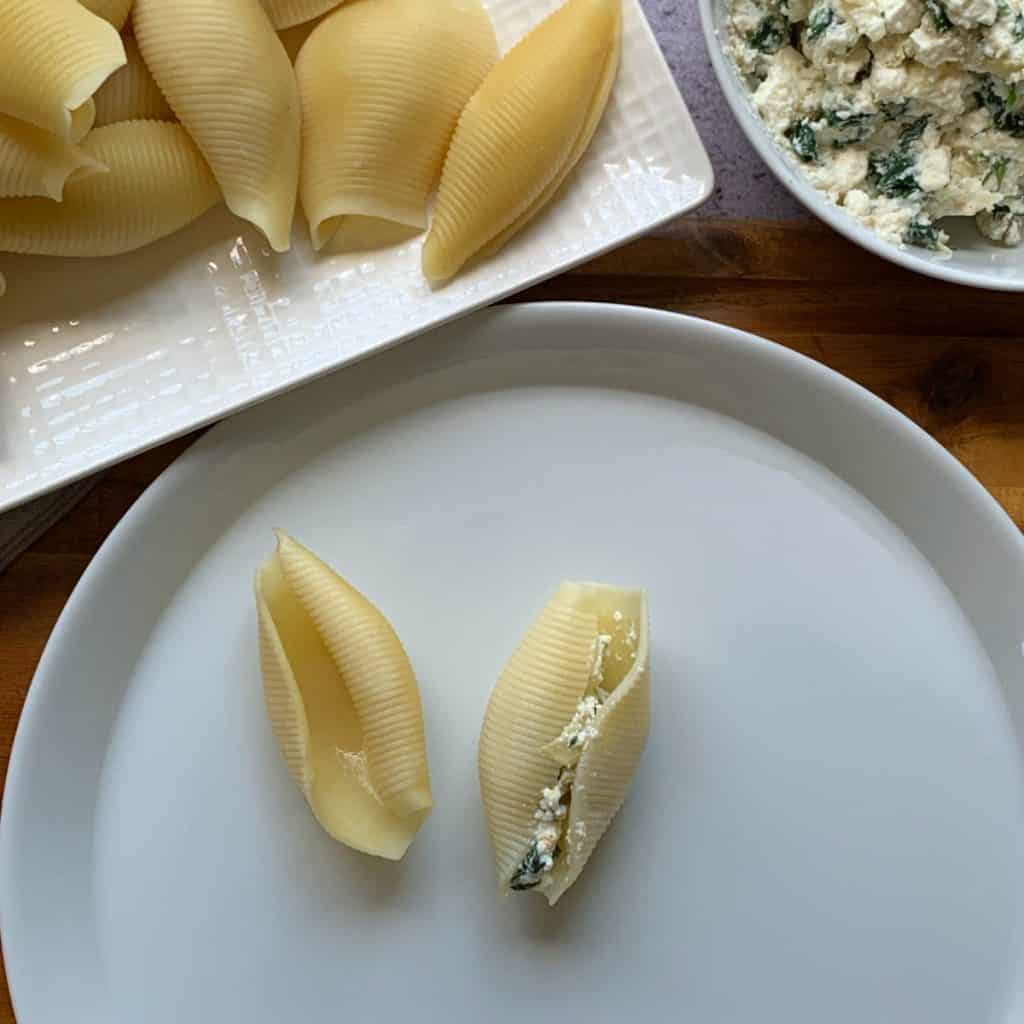


Step 4: Baking giant stuffed shells

Oil the baking dish and spoon tomato sauce on the bottom. The amount of the sauce depends on whether you like your pasta with a lot of red sauce or just enough to coat the bottom.
Best Way to Serve Stuffed Shells
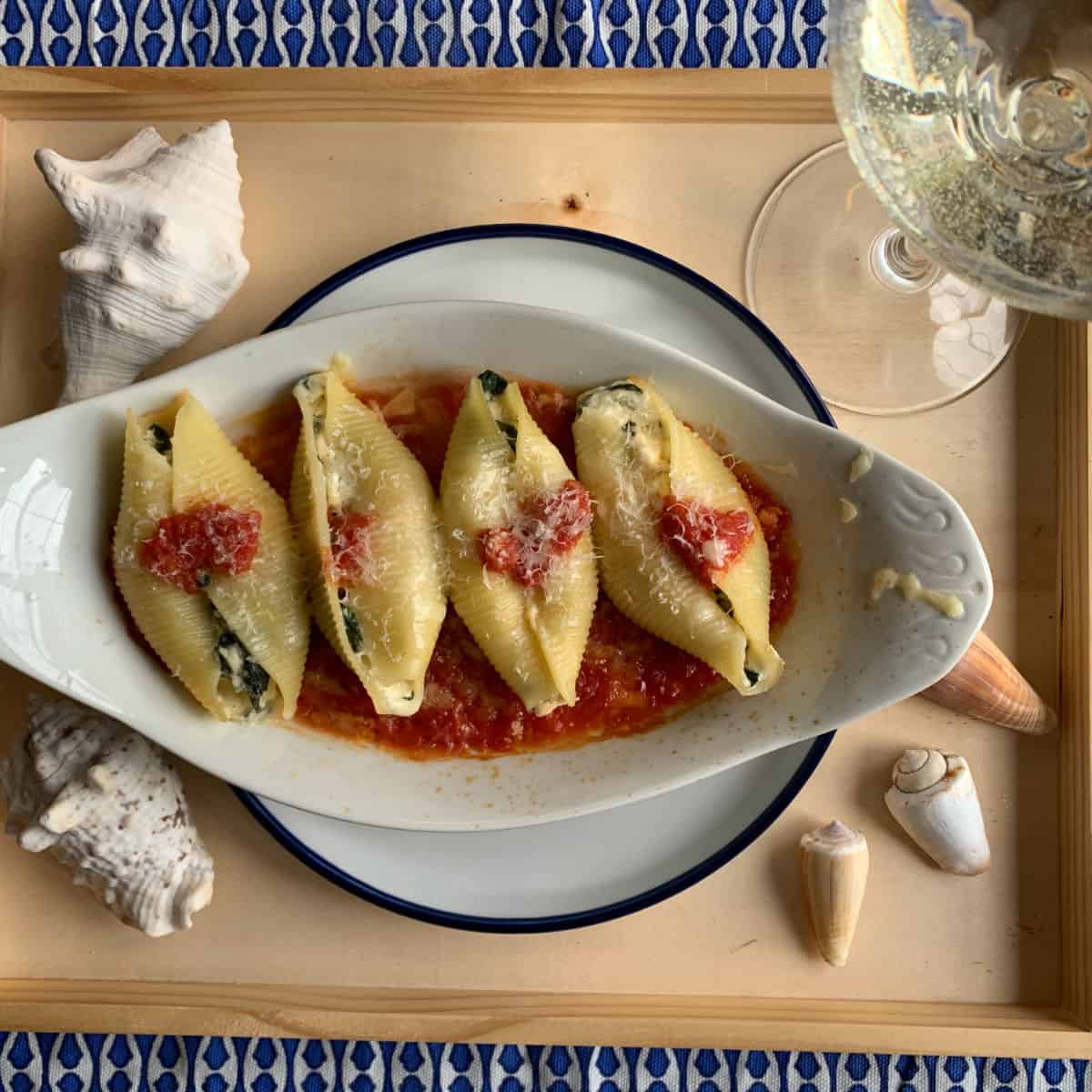
Tips and Wisdom from Cafe Osharak
Frequently Asked Questions
What is the difference between stuffed shells and manicotti?
The manicotti is made with crespelle, Italian style crepes, then generously filled with a ricotta cheese mixture. They are rolled into tubular logs and baked in tomato sauce. On the other hand, stuffed shells are prepared using machine-cut dry pasta, shaped like seashells. Although both dishes may share the same filling and sauce, their texture and taste set them distinctly apart.
Manicotti embodies a delicate and velvety quality, while stuffed shells offer a slightly chewy and toothsome experience. Both are uniquely delicious, showcasing the artistry of Italian cuisine.
Can stuffed shells be made frozen?
Stuffed shells are excellent candidates for freezing. All the ingredients hold up well to freezing. For optimal results, start by boiling the shells and then filling them. Lay them out in a single layer on a tray and freeze them for about 20-30 minutes. Afterward, you can divide them into freezer bags, where they’ll stay good for up to 3 months.
When you’re ready to enjoy them, spread some sauce onto a baking sheet and nestle the frozen shells within. Cover them up and bake in a 375°F (185°C) oven for 30-40 minutes. Take a moment to ensure the center of the filling is heated through. If you prefer, you can also use an instant-read thermometer, aiming for an internal temperature of around 160°F (75°C).
More Recipes to Try from Cafe Osharak
If you love baked Italian dishes like Mediterranean Giant Cheese-Stuffed Shells with Artichokes & Spinach, you’ll also appreciate the comforting flavors of Beef Braciole Rolls. Both recipes showcase slow-simmered sauces and rich fillings, making them perfect for a cozy, satisfying meal.
If you try out this recipe, I would love to hear from you! Let me know if you find it delicious and straightforward to prepare. I’m here to answer any questions and welcome any suggestions. Also, don’t forget to explore other recipes from Cafe Osharak that you might love!
More Mediterranean and Middle East recipes.
Mediterranean Stuffed Shells Loaded With Feta Cheese and Artichokes – Conchiglioni

Ingredients
- 250 g Pasta Shell 10 oz
- 200 g feta
- 200 g Ricotta
- 100 g mozzarella
- 50 g olives green or black
- 100 g spinach
- 100 g artichoke frozen or canned
- 1 tablespoon Parsley chopped
- Oil
- 2 cups Tomato sauce
- Parmesan cheese
- 2-3 Basil leaves
Instructions
- Bring a large pot of water to a rolling boil, then add salt and the pasta shells. Cook them for around 8-10 minutes, until the shells are cooked through but still firm. Best to under-cook them as they bake again later.250 g Pasta Shell
- As the shells cook, combine the ricotta, feta, and mozzarella cheese in a large mixing bowl. Mix in the cooked, well-squeezed, and chopped spinach, along with the chopped olives and artichokes. Season the mixture with salt, pepper, and chopped parsley and mix together until smooth. Adjust the seasoning if necessary.200 g feta, 200 g Ricotta, 100 g mozzarella, 50 g olives, 100 g artichoke, 1 tablespoon Parsley, 100 g spinach
- Once the shells are cooked, drain them and spread them out on a baking rack in a single layer to cool.
- Gently open the shells and fill each with about a tablespoonful (around 25-30g or 1 oz) of the prepared filling. Carefully pinch both sides together to secure the filling. Repeat until all shells are filled.
- Preheat the oven to 375°F (185°C). Drizzle a bit of olive oil onto the bottom of a baking dish, then ladle some tomato sauce over it. Place the stuffed shells in the dish, ensuring the seam side is facing upwards.2 cups Tomato sauce, Oil
- Bake for 30 minutes covered with foil or parchment paper. Uncover, sprinkle grated Parmesan cheese and broil for 2-3 minutes until cheese is melted.Parmesan cheese, 2-3 Basil leaves
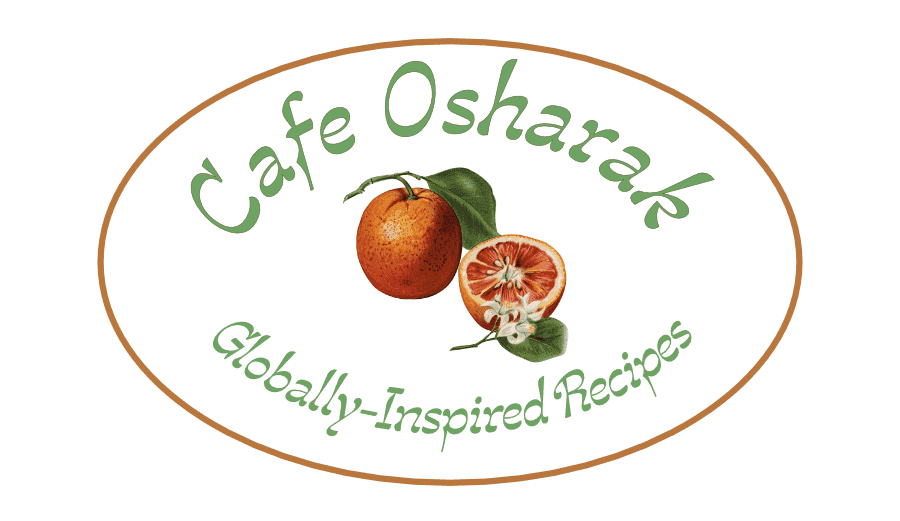

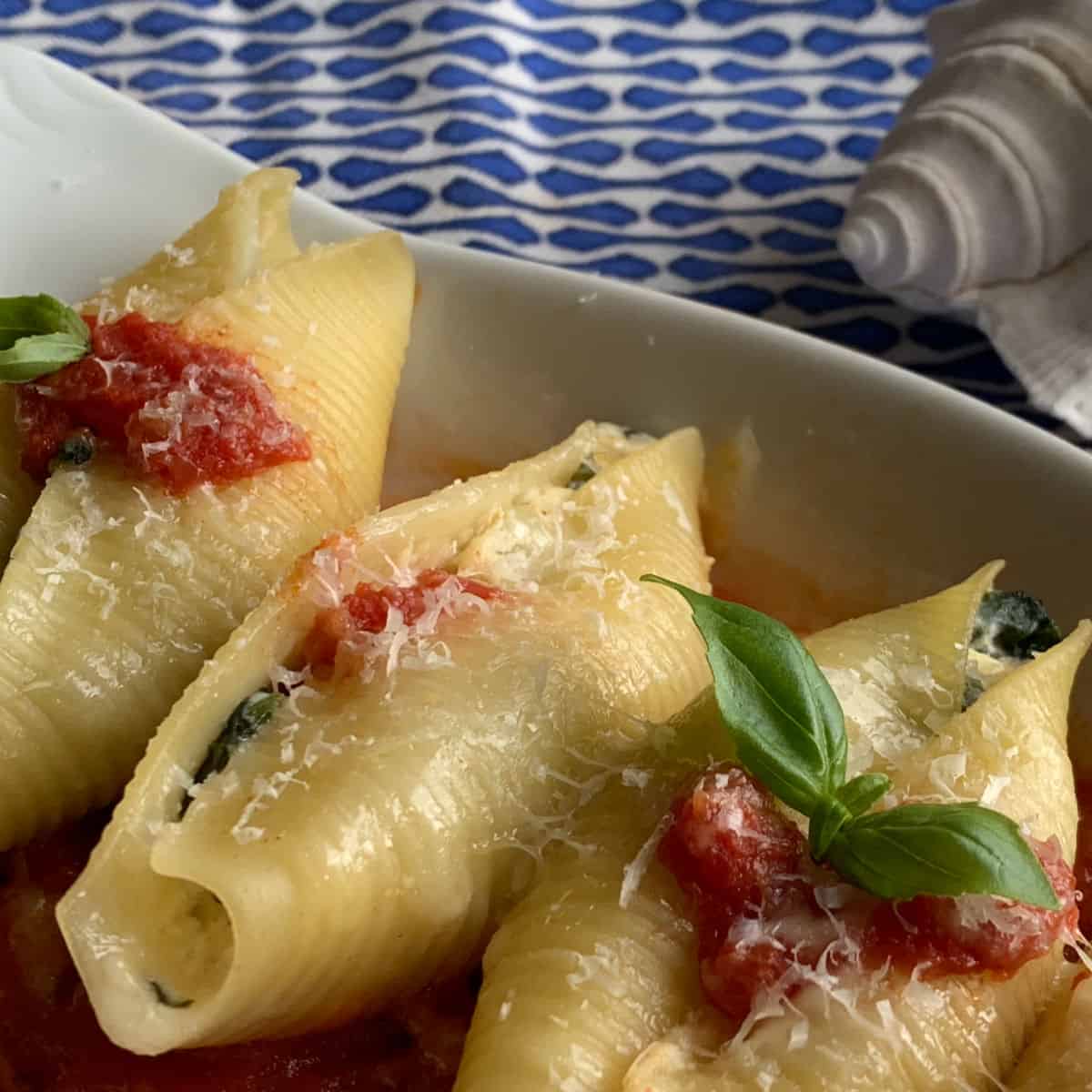
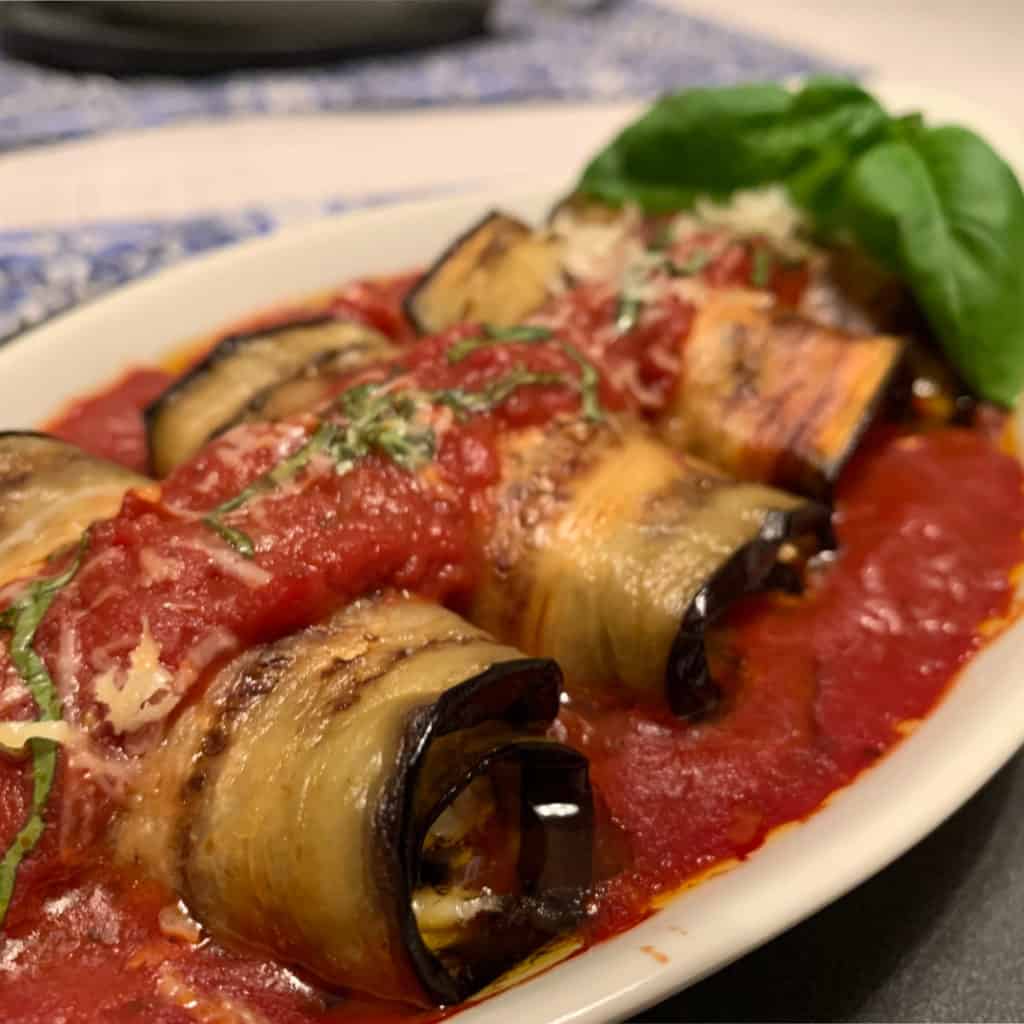

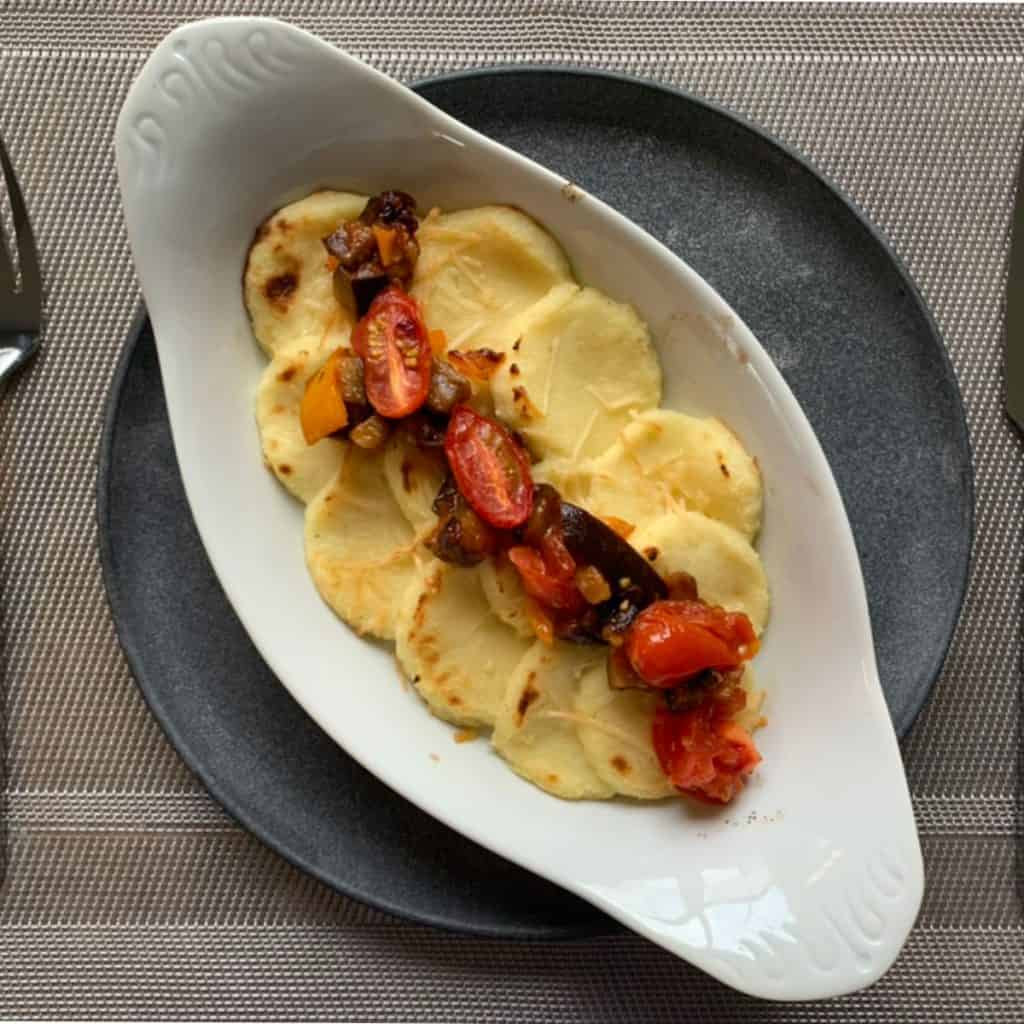


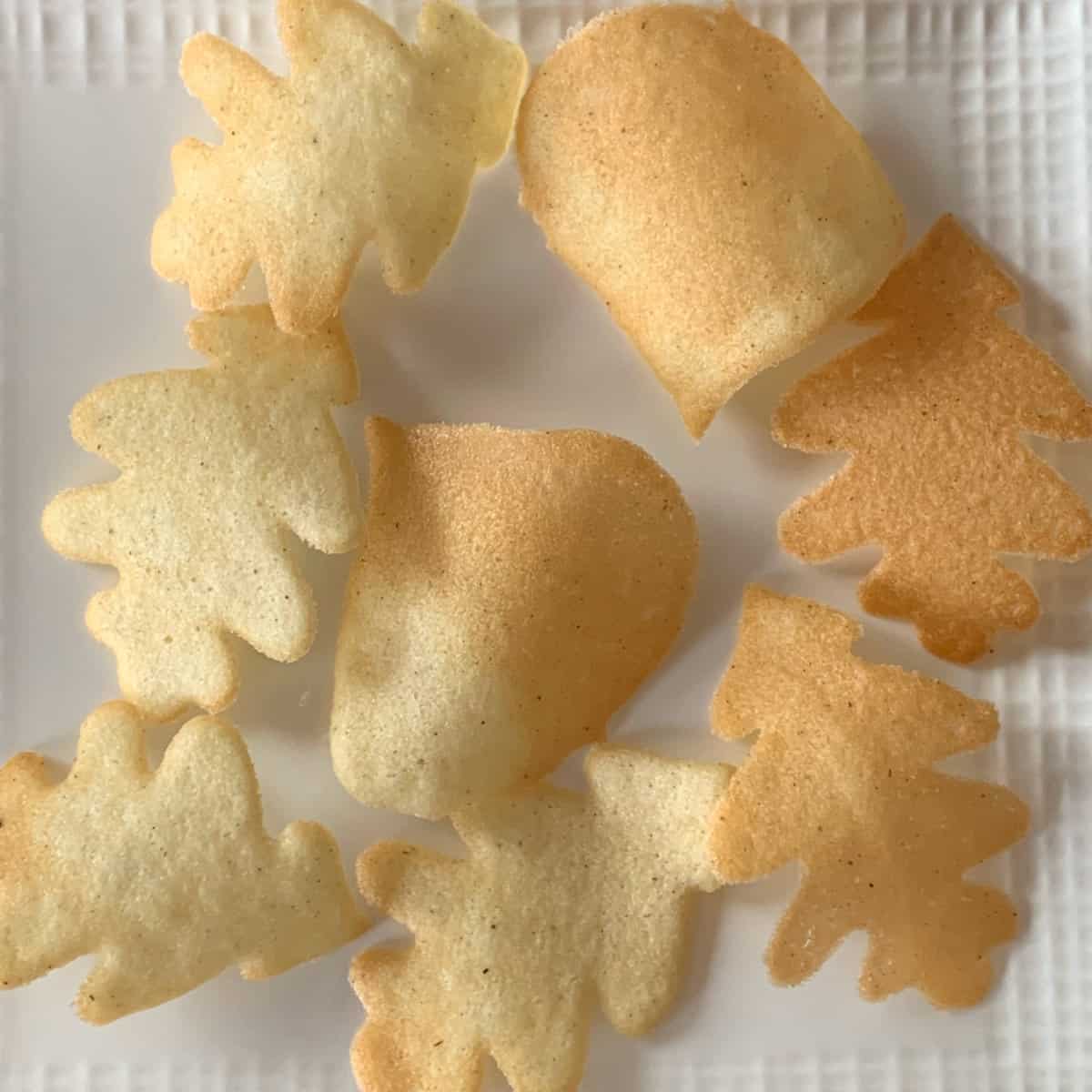


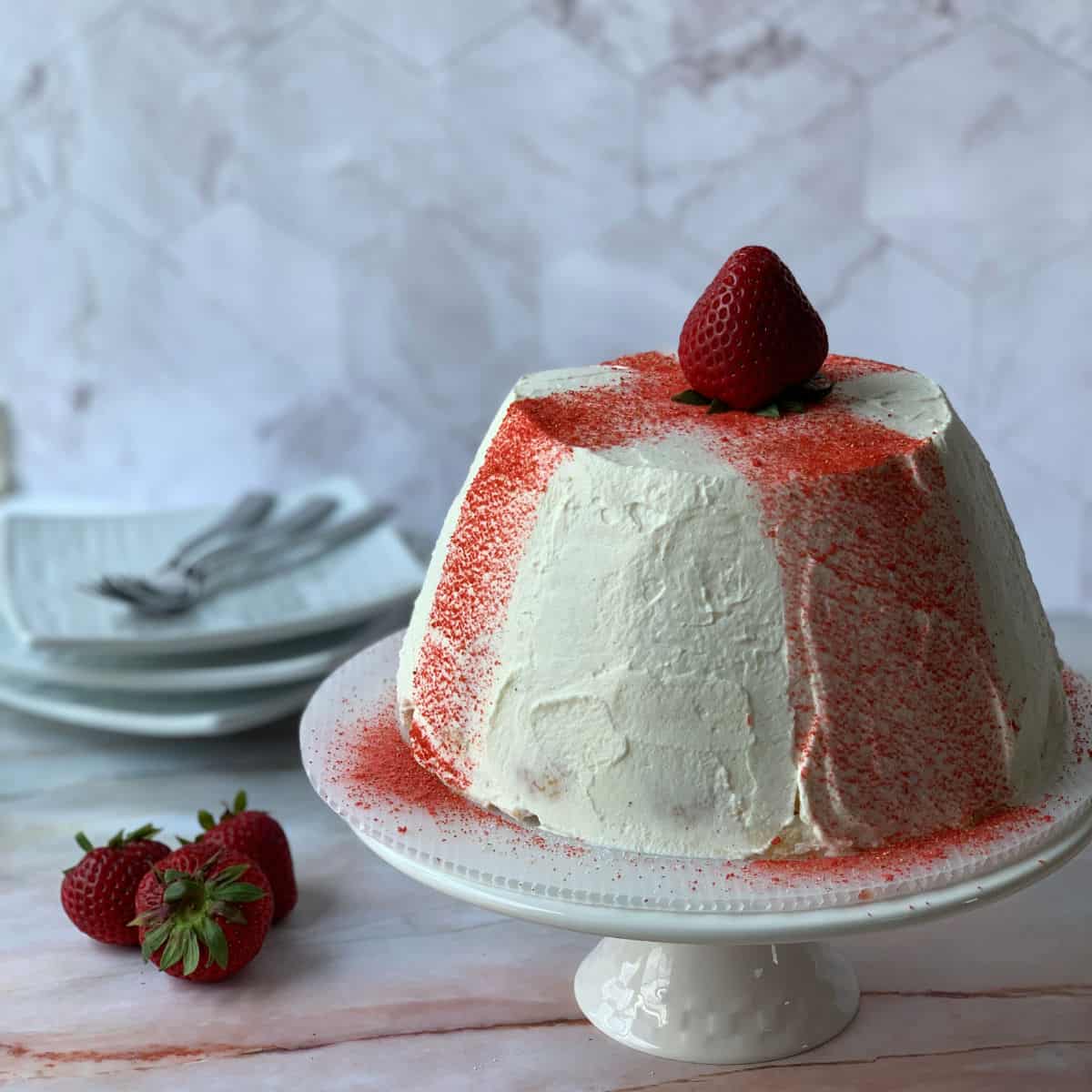
This is my favorite stuffed shells recipe, especially if I want to try something different from the traditional Italian version of this dish. Its unique and creative and the flavors are amazing. Thanks for bringing this to us Noune!
Sounds delicious, but you didn’t list the spinach in the ingredients. I could guesstimate, but I thought I would let you know.
Hi Al, Thank you for bringing this to my attention. I updated the recipe card and added the spinach.